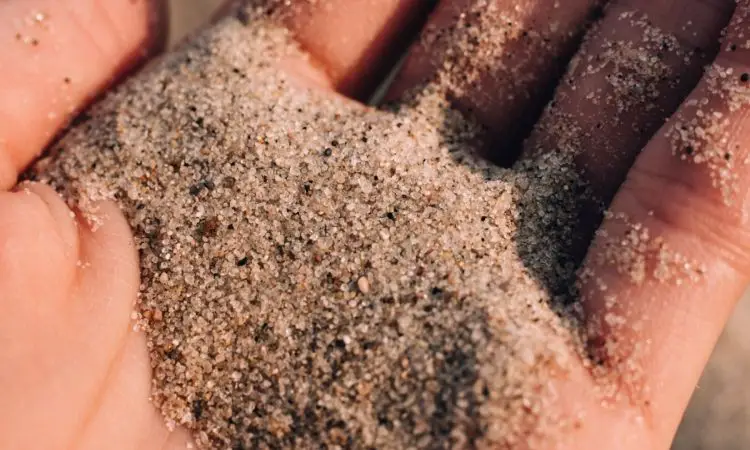
Beginner aquarists are always eager to create a perfect replica of their fish’s natural home. I would find most of them in forums and other online platforms asking if they can use normal sand as a substrate in aquariums. Can you use normal sand in your aquarium?
Yes, normal sand can be used in aquariums. Many experienced aquarists prefer sand as a substrate, and most use sand from lakes, oceans/seas, and rivers. I have seen many attest that the best (functionally) aquariums they have had, have sand as a substrate.
However, it is to caution beginners who intend to do the same. Most often than not, normal sand may be polluted, infested with harmful bacteria, or too salty for use in aquariums. It is dangerous to use such sand, and aquarists are irresponsible since it may lead to fish illness or fatality.
Responsible aquarists “treat” sand before using them. Unfortunately, many don’t know how to do this right. They try but end up having a host of other problems in their aquariums. How should one treat/clean sand?
Cleaning/ Treating normal sand for aquarium use
Treating or cleaning and can be done in different ways. The type of sand factors considerably in what way one can use it to clean. Sand from ocean shores has higher salinity from sand picked up from freshwater bodies. I will suggest the process below to avoid confusion while achieving the intended goals.

That being said, here is the step by step process of preparing your sand:
Sieving
While cleaning sand, I usually start by sieving out dirt and other foreign particles. Some aquarists like their sand as it is, while others prefer to have it as fine as they can have it.
This part of the process is not for the first type of aquarists; please skip to the next part. For those like me, you might want to fill a bucket with water (tap water is fine). With your sieve/ filter in hand, add sand to the bucket.
Be sure to use a fine sieve (most minute holes) to trap any foreign objects or debris.
Washing and rinsing
The primary purpose of washing and rinsing is to eliminate dust or mud (especially in river or lake sand). Dust can frustrate you if they find their way into the aquarium. Not only does it make aquarium water dirty, it can also stress or kill your fish.
During washing and rinsing, you will need a bucket and a pressure hose. A pressure hose is optional, but it is very efficient.
Fill the bucket with sand halfway. Add water into the bucket using a pressure hose. This will work better if the hose is fitted with a sprinkler to provide maximum pressure.
Dust particles in the sand will make the water cloudy. You should drain the cloudy water once your bucket is full and repeat the process. Ensure that you don’t pour away sand while draining cloudy water.
The goal is to rinse and repeat until you notice the water is very clear. To be sure, you can mix the mixture up to unsettle covered dust.
Once the sand is thoroughly cleaned, it is ready for the next few steps in our process.
Sterilization
It is not uncommon for sand to contain harmful bacteria. Therefore, for the safety of your fish, sanitizing the sand is crucial.
Fortunately, this is a straightforward thing to do with many options for going about it. All you have to do is soak the sand in hot water a few times. In recent years, concern has been raised about melted plastic in sand. I recommend using a metallic bucket for this job to eliminate this error.
If you don’t have a metallic bucket, you can soak the sand in bleach and water for 1 to 2 days. It would help if you then rinsed sand in water with a dechlorinator. Rinse and repeat a few times with water only to wash away any remaining chemicals.
At this point, you can go ahead and add sand into your aquarium unless you are using beach sand. Due to higher salinity levels, desalination of the sand should be done before placing sand in aquariums.
Desalination
The chances are that once you are through with all the above steps (including hot water), salinity levels have dropped considerably.
However, you can simmer the sand for 15 to 20 minutes to allow the remaining salts to dissolve in water. Afterward, filter the sand out, and it will be ready for use.
If you are keen on using beach sand, make sure to pick sand away from the shores. The further the shoreline is, the better. Such sand has lower salinity due to being washed up with rainwater. It is, therefore, easier to prepare for your aquarium.
Conclusion
In summary, the steps to cleaning or treating sand are sifting/sieving, washing/rinsing, sterilizing, and desalinating in case of beach sand. The process is flexible depending on personal situations, but it is highly recommended to apply it to the latter. Either way, the goal is to make the sand safe for our fish.
It can seem long and arduous. The results, however, are very pleasing. You can spare the money you would have used on the sand for others and still provide that natural habitat for your fish.

Jesse is the principal author of this blog. He is an avid fishkeeper with rich experience spanning several years. He is here to share his knowledge and ensure you also have a guiding compass, as he did with his father.